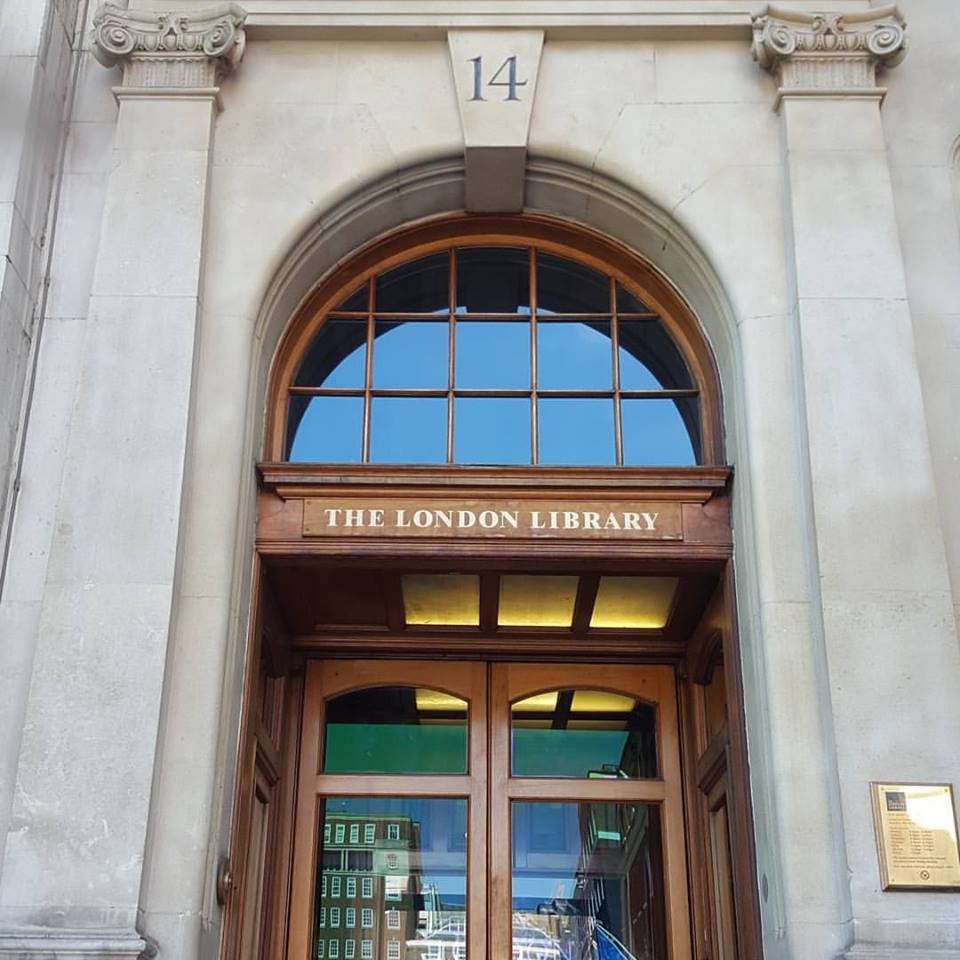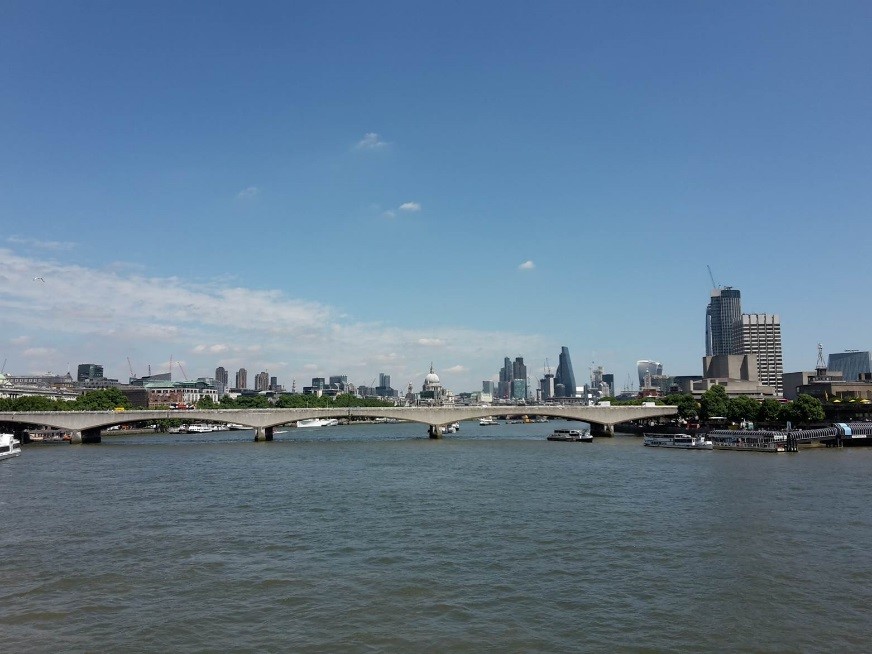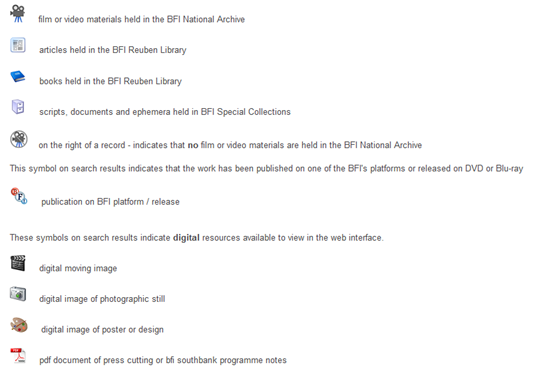On the morning of Wednesday 5th July, this year’s Graduate Trainees met at Oxford station for perhaps the most eagerly awaited trainee trip: The visits to two specialist libraries across the capital. This year, trainees could decide to visit the Guardian Library, the Natural History Museum Library, the London Library, and the British Film Institute Library. As this visit was the highlight of the year for many trainees, we have therefore decided to write a few words about the day and what we learned from visiting these four unique libraries!
THE GUARDIAN LIBRARY
For the morning session, eight of the trainees had decided to visit the library of the Guardian and Observer newspapers. Located in a light and airy high rise just to the north of King’s Cross Station, it was immediately apparent when entering the building and meeting the Information Manger that both the library and the role of a librarian at a news organisation were very different to the world of academic libraries we had grown accustomed to in Oxford. Instead of the gothic exteriors, ancient tomes, and wooden panelling of many of the Bodleian Libraries, on our tour of the newspaper offices we encountered instead a busy open plan office stretching around the entire building and a rather small library tucked away in the corner.

In his informative talk during our visit, the Information Manager explained why this was the case. In a world of 24 hour news and broadband connectivity, the role of the librarian at all media organisations has changed considerably over the last few decades. Before the internet, he explained, all large newspapers required a librarian to manage a ‘cuttings library’, filled with stories taken from all the major newspapers and meticulously organised by their subject – either about a particular event or about the activities of a well-known person. As technology advanced and journalists started to do the majority of their work online, the role of the librarian therefore also changed. The cuttings library still exists, but on top of managing this, the information team now use the Guardian collections to improve the journalism in other ways. He explained that their in depth information knowledge gained from librarianship means that they are well placed to answer any complicated research enquiries from journalists or to even create their own pieces following statistical analysis and insight gained from managing the Guardian Library’s holdings. Although technology is affecting librarianship across all sectors, this talk therefore demonstrated that the skills of librarians remain useful in a digitally connected world.
The tour that we had of the offices concluded with a visit to the offices of the Guardian’s archives team, which also works closely with the library. The two archivists emphasised the importance of their collections, as they not only provide a unique glimpse of the changing journalism industry in the UK, but can also act as a springboard for a wide variety of researchers, as newspaper articles are the first response to current events. The archives contain several back editions of the Observer and Guardian newspapers, and several artefacts relevant to their journalism, such as the Edward Snowdon laptops that are now of national importance.
It was excellent to have the opportunity to visit the media library of one of the most well-known newspapers in the country, and the talks gave us a well-rounded introduction into another aspect of librarianship that few of the trainees had prior knowledge of or considered as a career path.
Written by Will Shire, Taylor and PTFL trainee
THE NATURAL HISTORY MUSEUM LIBRARY
Those of us fortunate enough (perhaps ‘judicious’ might be a better term – who wouldn’t want to stroll beneath a 25.2 metre-long floating blue whale skeleton?) to bid to visit the NHM were hoping for a morning of quirks and curiosities. Happily, we were not to be disappointed.
Seated amidst the stuffed rarities and sweeping bookshelves of the Reading Room we were treated to two very intriguing talks delivered by the Researcher Services Librarian and the Special Collections Librarian, which covered (amongst other things) mermaids, woodworm, and the dangers of voyaging in the 18th century.
We were able to hear about the development of the existing collections and received an overview of some of the topics represented in the library today such as Palaeontology, Botany, Entomology, Zoology, Ornithology, Anthropology and Mineralogy.

There was also a chance to take a closer look at some of the NHM’s most fascinating manuscripts and special collections including a letter penned by Charles Darwin and the Endeavour botanical illustrations. Our guides were friendly and very knowledgeable and I feel that we all benefitted from our exposure to a library so entirely different to those that many of us are used to.
The NHM has been steadily acquiring material since 1881 and hosts readers from a variety of backgrounds on a daily basis. There is a growing emphasis on the importance of digitisation across libraries and archives at present and consequently the NHM aims to upload around 25,000 items to the Biodiversity Heritage Library every single month, ensuring that scholars are able to access the materials they need wherever they are located. NHM staff have produced publications on a plethora of interesting topics and are often found engaging in outreach activities such as ‘Nature Live’ (free discussions held in Attenborough Studio, by all accounts not to be missed!).
I’d like to thank our hosts for their time and efforts in showing us around this magnificent institution. I left the NHM with a whole new appreciation of the magnitude of that 83 foot whale skeleton, but also with a better awareness of the sheer scale of the NHM library and archival operations, and for that I’m incredibly grateful.
You can keep up to date with the latest goings-on at the NHM by following them on Twitter @ https://twitter.com/NHM_Library.
Written by Steph Bushell, All Souls College trainee
THE LONDON LIBRARY
Following our respective morning sessions, eight of the trainees travelled to 14 St James’ Square to visit the famous London Library in the afternoon. From the outside this library looks rather small, as it appears to just fill one small building tucked into the corner of the square. Once we entered, however, it became clear that appearances can definitely be deceiving!

Upon entering the building, we were met by the Head of Membership Services and she proceeded to give us a very informative tour through the labyrinthine London Library. Although the library originally only occupied the small entrance building on St James’ Square, she told us that it had continued to grow since its foundation in 1841 and had gradually expanded into the adjacent buildings. On our tour, we therefore climbed several sets of stairs, and saw beautiful cast iron stacks, filled with levels of books both above and below us as far as we could see.
Whilst we were looking at the stacks, we were given a short introduction into the unique classification scheme at the London Library. Unlike the academic libraries in Oxford, the London Library is designed for browsing, and the shelfmark system is therefore designed accordingly. Instead of the neat labels with individual shelfmarks in the Bodleian Libraries, the London Library’s books are arranged alphabetically by individual categories designed in the Victorian period. This means that browsing must be really fun, as readers not only have to browse the shelves to find a specific book (and hopefully encountering other interesting titles whilst they do so), but also have to think like a Victorian to find the books they need. Books on Ethiopia are consequently still shelved under A for Abyssinia, as this was the name of the country when the scheme was developed! As the library has no formal weeding policy and keeps 95% of its material on the open shelves, it is therefore common to find a modern book (such as one on Ethiopian History) nestled next to a Victorian copy on a similar topic.

After looking at the stacks, we then had a tour of the main reading rooms. Whilst we were looking through these rooms, our tour guide gave us several interesting anecdotes on the history of the library. We learned, therefore, about the heroic efforts of the readers to rescue as many books as possible after one of the rooms was hit by a German bomb during the Second World War, and also discovered more about the famous literary figures associated with the library. These range from T.S Eliot, a long serving President of the Library, to Joseph Conrad, Agatha Christie, Virginia Woolf, and Siegfried Sassoon who were all members.
Our visit to the London Library was a really enjoyable experience. As it is a private members library, it was interesting to compare this library with the academic libraries we are used to in Oxford, and to see how this affects library organisation as it has created a library based around browsing and quick access to the majority of material. It is without doubt a unique library, and if I ever live in London and have enough money for the membership fees, I would definitely like to join in the future!
Written by Will Shire, Taylor and PTFL trainee
BFI REUBEN LIBRARY

Arriving at the British Film Institute at Southbank after lunch on a ridiculously sunny day (see Hannah’s photo!), half the trainees met with the Librarian for Reader Services for the BFI Reuben Library. First of all, she took us to the library’s main reading room and spoke with us about what her library offers and how it functions, along with a brief history. We learnt a lot. For example, we were told that the library has recently seen a surge of A-Level pupils and school-aged readers. We also learnt about the library’s stance on membership; previously it had been a members’ library which charged a small membership fee but now it is free for everybody to use.
After the introduction, we were given a demonstration of the library’s collections database which holds information on more than 800,000 film titles. The database itself was quite different to ones we as trainees are familiar with in our university libraries. When using SOLO, we may filter by ‘physical items’ or ‘electronic resources’, but at the BFI it is the norm to begin a search while keeping an eye out for symbols indicating a much larger range of materials:

Following this, if you are searching to view a film – or as it is referred to at the BFI, searching to access ‘moving image material’ – there may be several different ‘manifestations’ to choose from. This has been explained to be roughly equivalent to different editions or publications of a book. These different manifestations could include film, digital copies, VHS cassettes, audio tapes, and film negatives – all of which could be subdivided by gauge, release print, or combination.
We were also shown some of the exciting projects going on at the BFI, from their streaming service – BFIPLAYER – to the fascinating Britain On Film. The latter is a web interface where you can find films made locally for a certain area: documentaries, home films, shorts and even feature films.
Next we were taken downstairs to visit the library’s stacks. There we received two treats tailor-made for librarians: bookmarks and a recommendation of a film with a particularly inspiring librarian character: Desk Set (1957) starring Katharine Hepburn. Our tour guide also mentioned an article she had written for the BFI website about the best librarians on screen (not, as she said, just on film, else you have to miss out Giles on Buffy): http://www.bfi.org.uk/news-opinion/news-bfi/lists/10-best-librarians-screen
It was here too that the Librarian for Reader Services explained how she had had to fight against cuts to the library, whether to its staffing, funding or collections, leaving us with the impression that as a librarian it is important to be a passionate and vocal advocate for libraries.
Written by Connie Bettison, St John’s College trainee
So that’s a short guide to our hugely enjoyable day visiting some beautiful libraries across London! The day was definitely one of the best visits we have been on throughout our year, and I’m sure I can speak for all trainees when I say that I am very grateful to Staff Development for organising everything and to the individual staff members at the respective libraries who made time for us. It was a great way to end our traineeship, and gave us a fascinating insight into several libraries that are completely different to the ones that we are familiar with in Oxford.
